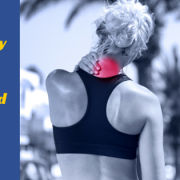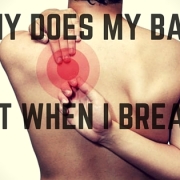Getting a Safe Correction after Spine Surgery

Read Time: [3 minutes]
Over the past few weeks, I’ve been seeing a lot of posts about this article filling up my Facebook newsfeed. The article talks about how a specific type of spine surgery called spinal fusion has been found to be mostly ineffective. The author goes so far to say that the surgery should be put to rest.

Article by Dr. Chris Centeno http://www.regenexx.com/nejm-back-neck-fusion-surgeries-not-needed/
I’ve seen a lot of patients with a previous history of spinal fusion. Some people feel like their life was made dramatically better by spine surgery, others feel like it didn’t have any effect at all, and some people will actually feel a lot worse. Overall, the verdict on fusion surgery seems to be pretty dim.
People Don’t Volunteer for Spine Surgery. It’s a choice made out of desperation
Here’s the thing. I don’t blame people who choose to elect spinal fusion even in the face of the world’s best evidence. Why?
I’ve never experienced the level of pain that makes someone consider spine surgery an option.
It’s the easiest thing in the world to be a chiropractor, physical therapist, or pain management doctor to tell someone that they don’t need spine surgery. Our professions are invested in the idea that you should choose us over surgery because you should exhaust your conservative options before being cut open.
However, someone who is choosing spine surgery is often someone who is desperate. Their pain is debilitating and costing them the ability to work and move like a normal human being. Many patients have tried numerous conservative options and feel like they have spent years feeling debilitated. They are tired, frustrated, and just want something, anything to make their pain go away.
I hear it in my office all the time. “Doc, can you just cut this thing out of me?”
Sure it’s said in jest, but it opens a window to what someone’s last option looks like. Just cut me open, and take whatever is causing this pain, and remove it.
You’ve had surgery, now what?
People that choose surgery often feel like they’ve exhausted all possible treatment options.
If your pain didn’t improve or if you develop or new and worse pain after surgery, it can be devastating to the psyche. You tried everything and it still didn’t work. Will you have to suffer like this for the rest of your life? Do I just have to rely on pain management and more surgery?
From time to time, I’ll meet people who tell me about how bad their back or neck problems are, but they’ll usually say something like:
But I’ve already had surgery, and my doctor says I shouldn’t have my back cracked.
I understand this fear. If I had hardware in my spine, the last thing I would want is someone just jerking my back or neck around and possibly hitting one of those fused parts.
Here’s the thing though. Not all chiropractic techniques require heavy force.
There are a lot of chiropractors trained to be extremely precise with their adjustments. With a high level of precision, you can avoid doing anything to the spine that may jar or disturb these fused vertebrae.
This is important to remember because precise Structural Correction of the spine is something that can really help these patients! It’s one of the reasons that there are doctors in Palm Beach County that refer cases to our office when patients still have pain after surgery.
The Problem Isn’t Just the Spine, it Might Be in the Brain
Pain is a complex physiological phenomenon. As doctors, we can sometimes oversimplify back and neck pain as a bad bone or a bad disc. The fact that people don’t get better after surgery isn’t the fault of the surgeon. The problem is that the bones and discs in the back may not have been the actual cause of the pain to begin with.
Pain can exist in the absence of physical tissue damage as is often seen in things like fibromyalgia or complex regional pain syndrome. In these cases, there is a problem with the way the brain perceives the environment. It is overreacting to normal stimuli.
When people have successful cases with surgery, then we can probably assume that a bad disc or some bad vertebrae were big contributors to the patient’s pain process. However, if we are operating on patients whose symptoms are coming from a brain that is overly sensitive to pain, we are giving that sensitive brain more ammunition to be in pain because of the surgery itself.
Sometimes the answer is not simply to change the bones, but we have to desensitize the brain to normal living.
That’s one of the biggest unknown benefits to Structural Correction with the NUCCA procedure. Normal Structure plays a vital role in normal input into the brain. Our gentle approach to correcting the spine is capable of changing the signals the brain should be focusing on and reducing some of the chronic inflammation impacting your sensitive brain tissues.
Changing the Conversation
Millions of people every year are going to have spine surgery. It’s up to the doctors and surgeons to decide if surgery is appropriate for a patient’s situation. There’s no use in beating a patient up for making a decision that they think is going to help them live a better life.
It’s our job to let people know that whether you had surgery or not, there are still options available to help people live a normal life without feeling debilitated.




















